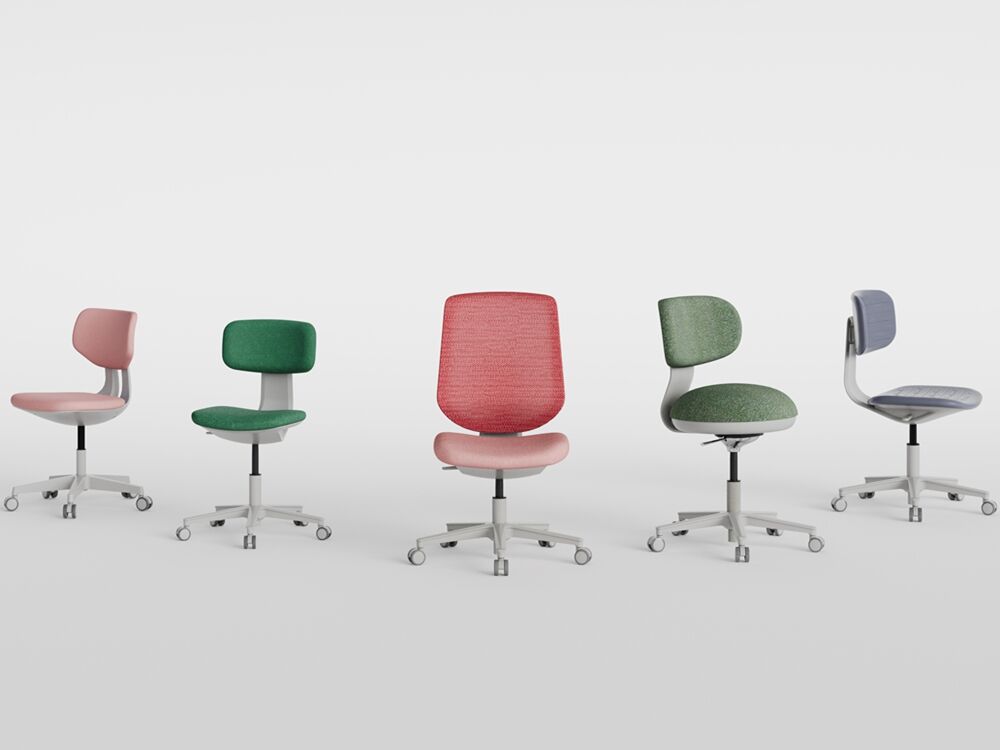
Benefits of Choosing a Mesh Office Chair
Enhanced Breathability for All-Day Comfort
Choosing a mesh office chair is a smart decision if you value enhanced breathability and comfort throughout the workday. The mesh material promotes superior airflow, helping to reduce heat and moisture buildup, making it essential for anyone who spends long hours seated. This improved ventilation ensures that even warmer office environments remain comfortable, particularly for individuals prone to overheating. Studies have shown that using breathable fabrics in office furniture can significantly boost worker productivity and satisfaction by maintaining a comfortable microclimate conducive to focus and task management.
Lightweight Design and Modern Aesthetics
Mesh office chairs are an excellent choice not only for their functionality but also due to their lightweight design and modern aesthetics. These chairs are generally lighter than traditional office chairs, which facilitates ease of movement and reconfiguration within a workspace, ideal for dynamic office settings. Additionally, their contemporary design complements a variety of decors, making them suitable for a wide range of environments, from corporate interiors to home office spaces. The evolving designs and sleek appearance of mesh chairs add a fresh, modern touch to any workspace, enhancing the overall ambiance and appeal.
Posture Support and Flexibility
The posture support and flexibility offered by mesh office chairs are crucial for maintaining long-term health and comfort. These chairs are often designed with dynamic seating features that promote better posture, helping users align their spines naturally. The flexibility of the backrest aids in maintaining this optimal spine alignment, significantly reducing musculoskeletal issues in those who use the chairs for prolonged periods. Research has indicated that supporting proper posture can lead to a 20-30% reduction in physical fatigue during extended work hours, making mesh office chairs a beneficial investment for enhancing worker wellbeing and productivity.
Key Features to Prioritize
Adjustable Lumbar Support Systems
Incorporating adjustable lumbar support systems in an office chair plays a crucial role in preserving the natural curvature of the spine. This feature is vital in minimizing back pain during long hours of sitting. Studies underscore that personalized lumbar support can significantly enhance comfort levels across diverse users. When selecting an office chair, prioritize systems that offer height and firmness adjustments to cater to individual ergonomic needs. Whether it's an office desk chair or a comfy office chair, adjustable lumbar support is a key aspect that can lead to heightened comfort and productivity.
Seat Depth and Height Customization
Proper seat depth and height customization are essential features of any high back office chair. Incorrect settings can result in circulation issues and discomfort over prolonged periods of use. Features that allow for 2 to 4 inches of seat height adjustment can accommodate a wider range of user heights effectively. This ergonomic height adjustment contributes to enhanced comfort by ensuring users can maintain optimal posture, reducing pressure on legs and promoting better circulation.
Durable Frame and High-Quality Mesh Material
Durability and material quality are paramount when choosing an office chair. A sturdy frame crafted from steel or reinforced plastic is crucial for longevity and user safety. Additionally, selecting a chair with high-quality mesh material is essential for providing both support and breathability. This ensures a comfortable seating experience while maintaining structural integrity. It's prudent to opt for options with warranties covering at least five years, safeguarding your investment in a durable office chair with excellent breathable qualities.
Tilt Mechanisms and Recline Options
Tilt mechanisms and recline options in office chairs enhance flexibility and comfort. These features allow users to shift their weight and reduce pressure points, which is vital during extended use. Recline options provide the freedom to lean back occasionally while working or taking a break, boosting overall user comfort. Research indicates that a slight backward lean can enhance blood circulation and overall comfort, making these mechanisms a desirable aspect of any high back or small office chair.
Ergonomic Considerations for Optimal Support
High Back Support for Spinal Alignment
High back support is essential for promoting proper spinal alignment, significantly reducing the risk of chronic back issues over time. A high back design provides not only stability but also comprehensive support for the neck and head, ensuring that your upper body maintains a healthy posture throughout long working hours. According to Dr. Marc Agulnick, an orthopedic surgeon, improper posture can contribute to spinal degradation, making high back office chairs a necessary investment for spine health.
Armrest Adjustability for Shoulder Relief
Investing in chairs with adjustable armrests can play a crucial role in preventing shoulder strain, as they allow users to find their optimal resting position. The ability to modify armrest positions based on individual preferences is vital, as research indicates that an effectively supported arm position significantly contributes to overall comfort during prolonged use. By utilizing adjustable armrests, users can maintain a more relaxed posture, minimizing shoulder and neck discomfort associated with extensive desk work.
Footrest Compatibility and Circulation
Integrating footrest compatibility in office chairs fosters improved circulation and helps maintain an ergonomic posture. When using a footrest, users can experience reduced pressure on their lower limbs, hence minimizing fatigue and enhancing comfort. Ergonomic design that incorporates footrest compatibility facilitates circulation support, ensuring that even long hours of sitting do not result in circulatory health issues. Dr. David Perna from Back and Body Medical emphasizes the importance of such ergonomic features to alleviate discomfort and promote better health during extended use.
Maintenance Tips for Longevity
Cleaning and Caring for Mesh Upholstery
Keeping your office chair's mesh upholstery clean is crucial for maintaining air quality in your workspace. Regular cleaning prevents the buildup of dust and allergens, which can compromise the health of your environment. It's important to use mild detergents to gently clean the mesh, steering clear of any abrasive materials that could damage the aesthetic or reduce the functional quality of the chair. By integrating these simple cleaning habits, you can ensure that your office chair remains a comfortable and healthy part of your workspace.
Regular Adjustments for Consistent Support
Encouraging regular adjustments to your office chair is essential in maintaining ergonomic support. Over time, settings may shift due to daily use, leading to potential discomfort. By periodically reassessing and adjusting your chair's settings—such as height, tilt, and armrest position—you sustain its ergonomic benefits. This practice helps in preventing posture-related discomfort and promotes a healthier seating posture.
When to Consider Replacement
Knowing when to replace your office chair is vital for maintaining comfort and support. Visible signs of wear and tear, like frayed upholstery or malfunctioning adjustments, often indicate that it's time for a replacement. Generally, it's advisable to consider replacing chairs every 5-7 years to ensure optimal performance and comfort. By doing so, you not only maintain a supportive seating arrangement but also contribute to a more productive workspace.









